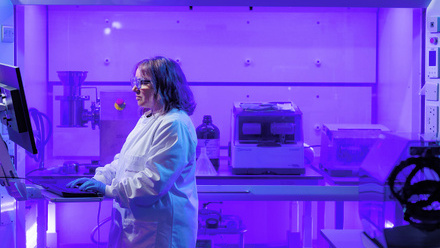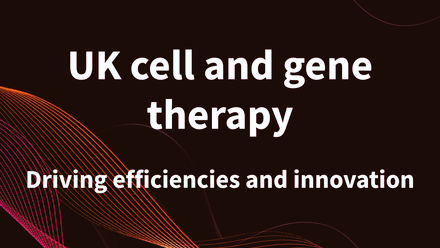Mixed messages: the power of mixed-mode chromatography in modern bioprocessing

Mixed-mode chromatography is proving that the best purification breakthroughs often come from thinking differently. In this blog, Chris Sadler, Development Lead at Astrea Bioseparations Ltd, explores how combining multiple interaction mechanisms in chromatography can unlock new, cost-effective solutions for complex downstream challenges. From tackling tricky bispecific antibodies to reimagining affinity tools, Chris shares how curiosity and collaboration are shaping the next generation of purification science.
When it comes to complex downstream purification challenges, time spent exploring mixed-mode chromatography (MMC) can lead to creative, cost-effective, and scalable solutions.
The golden era of bioseparation science in the 1950s and 1960s set the stage for much of what we do today. Giants of the field - Peterson, Sobers, Porath, Flodin, Hjertén, Axén, Cuatrecasas, and Sjöqvist - developed the foundations of affinity chromatography, paving the way for Protein A as a workhorse of antibody purification.
But bioseparation hasn't stood still. Next-generation Protein A products have improved binding capacities, chemical stability, and matrix design, and yet the familiar trade-offs between cost, selectivity, and efficiency remain part of every process developer's life.
In recent years, mixed-mode chromatography has added a new dimension to the separation toolkit—combining multiple interaction mechanisms (for example, ionic and hydrophobic) within a single ligand or resin. This duality offers both targeted selectivity and enhanced impurity clearance in flow-through applications, depending on how it’s applied.
Beyond single-purpose chemistry
At Astrea Bioseparations, our history of developing custom affinity adsorbents for highly specific targets has occasionally led to unexpected discoveries. During what we fondly call a “science sandpit,” we found that some resins designed for one molecule displayed unexpectedly strong performance against others—often for entirely different purification challenges.
This prompted a shift in thinking: perhaps many of the tools developed for affinity chromatography could have second lives as mixed-mode solutions. Exploring these overlaps has opened new avenues for tackling problems such as stubborn host cell proteins, DNA removal, and aggregate management in advanced biologics.
A tunable approach to purification complexity
The real strength of mixed-mode chromatography lies in its tunability. Each resin sits in a unique physicochemical “space,” defined by how ionic, hydrophobic, or polar its interactions are. By screening across these conditions - varying pH, conductivity, buffer composition, and lyotropic strength - scientists can identify conditions where subtle differences in molecular surface properties lead to powerful selectivity gains.
Take bispecific antibodies, for example. Unlike standard monoclonal antibodies, they resist the plug-and-play purification strategies that serve the mAb world so well. Mixed-mode media offer a versatile testing ground for separating mispaired species, diverse aggregates, or host-related impurities that evade traditional chromatography.
The process of exploration - of seeing what works “surprisingly well” - is one of the most rewarding aspects of working in mixed-mode purification. It's an area where curiosity often outpaces predictability, and where the best results emerge from systematic but creative experimentation.
Building shared knowledge
As mixed-mode technologies evolve, so too does our collective understanding of how to apply them effectively. Collaborative data sharing-on, for instance, DNA removal from lentiviral vectors or complex impurity profiles in gene therapy - is crucial to accelerating the field. The more we can map out which conditions and chemistries work best for which problems, the faster we can move towards platform-ready, yet adaptable, downstream solutions.
Mixed-mode chromatography sits at the intersection of science and serendipity. It rewards deep understanding of molecular behaviour while leaving room for discovery. For those tackling the ever-growing diversity of biologics and modalities, it offers both a challenge and an opportunity: to question assumptions, repurpose tools, and find function where none was expected.
So perhaps the message isn't mixed after all - just multifaceted.
Footnote: Mixed-mode 101
Chromatography in bioprocessing broadly falls into two categories:
- Generic modes such as ion exchange (charge-based), hydrophobic interaction (hydrophobicity-based), and size-exclusion (size/shape-based).
- Specific modes such as affinity chromatography (ligand-target based).
Mixed-mode, or multimodal, chromatography blends two or more of these generic interaction types within one ligand or matrix. This combination increases selectivity and robustness without relying on protein-based affinity ligands, often resulting in lower cost and higher chemical stability.
Meet the Astrea Bioseparations team at bioProcessUK on 25-27 November in Newcastle to learn more about their innovative approaches to downstream processing.




